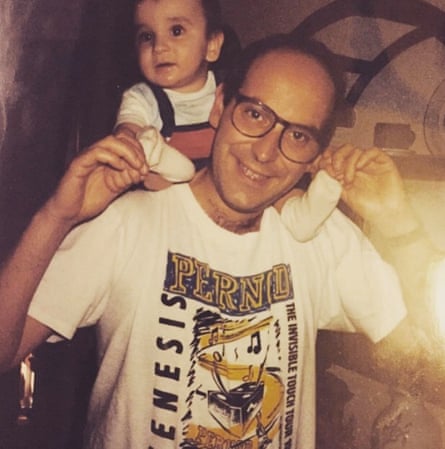
WWW.COMPUTERWEEKLY.COM
Saudi Arabia struggling to reach global leadership in deeptech
Wasim Alnahlawi - stock.adobe.co
News
Saudi Arabia struggling to reach global leadership in deeptech
Petrostate monarchy trying to build surrogate industry made of foreign startups because own ecosystem is too immature
By
Mark Ballard
Published: 16 Apr 2025 11:15
Saudi Arabia is investing in foreign deeptech startups to get them to come to its country and help it build an industry, because its own sci-tech ecosystem is too immature to meet its ambition of becoming a global leader in state-of-the-art fields of technology.
The yawning gap to the goal it set for deeptech to help it transform from monolithic petrostate to diverse hi-tech economy was apparent in a 2019 study by Boston Consulting Group (BCG) that found of 8,600 deeptech firms worldwide, the Middle East had just three in the UAE and two in Iran.
The US, the leader, had 4,198 firms. The UK, almost joint-third with Germany and behind China, had 435.
By 2022, Saudi Arabia (KSA) had 43, its ministry of communications and information technology (MCIT) said upon launching its roadmap to achieving global leadership in January. That was six years after it embarked on its Vision 2030 strategy to build tech industries to drive its transformation.
But it has made some notable investments in foreign firms that will help it establish a surrogate deeptech industry while it pursues the long, hard work it has begun in building a substrate of scientists and investors from which an indigenous deeptech industry can grow.
This, along with reform of burdensome regulations, might remove obstacles it has found deter not only its own aspiring entrepreneurs, but foreign startups as well.
It promotes some success in spinning deeptech startups out of King Abdullah University of Sciences & Technology (Kaust) in Riyadh, where it has concentrated efforts to build advanced research facilities to attract foreign scientists, and given them startup funding to turn their breakthroughs into ventures that might one day make money.
Investing in education
It has meanwhile been investing in STEM education in schools, channeling two million students into university in the hope that its young population demographic will give it an edge over other countries.
Last year, it counted 20,000 deeptech researchers in its universities, though it does not say how many of those are foreign. Their numbers increased 75% in five years, according to its roadmap report. It declared a goal to increase them another 700% in the next five years. Those researchers it does have rank among the best in the world.
To support them, it pledged a tenfold increase in public spending on research, development and innovation. It’s cutting red tape to make it easier to start and run a business, and creating special economic zones with laxer rules.
Its problems, however, are systemic. The scientists that deeptech firms need are leaving the country in a brain drain that by last count amounted to 81%. Though startup funding has boomed in Saudi Arabia, little of it has gone to deeptech because its “infant” sector is so underdeveloped, the roadmap report says. Most of it came from public budgets, via Wa’ed Ventures, the investment arm of state oil firm Aramco, and Kaust. A growing network of startup investors, incubators and accelerators are not equipped to handle deeptech. Deeptech startups are defined by their great need for scientists, guidance and lots of capital to see them through lengthy, R&D-laden startup periods.
Given that, it might take KSA a decade to build an industry, Alizée Blanchin, research director of influential deeptech dealmaker Hello Tomorrow – whose team co-authored the roadmap report with Kaust and MCIT – told Computer Weekly. “If you look at the number of startups that are spinouts from universities or research centres, that is very nascent still,” she said.
Hence, the Saudi monarchy has made getting help from foreign startups a key element of its strategy. However, its sci-tech business ecosystem is still so immature that foreign startups do not want to come. Therefore, KSA settled on buying foreign deeptech startups into the country by investing in them instead, and using them to build its ecosystem.
Blanchin said with that strategy, it might even achieve its ambition. It’s also making up for its immaturity with its speed and decisiveness. “Contrary to other ecosystems, they make things happen,” she said. “They put the resource in, and they put things together, and find the means and the partners very quickly. In Europe, we take three years to think about something and then a year-and-a-half to put it together.”
Read more about Saudi Arabia’s tech ambitions and challenges
The strategy will be exemplified later this year, when Saudi state oil firm Aramco will crank up the world’s largest industrial quantum computer, with intimate help from Pasqal, the pioneering French startup supplying it. Aramco investment arm Wa’ed Ventures tied the deal with two investments in Pasqal. The latter involved Wa’ed joining a consortium investment of €108m when Pasqal was just three years old. Pasqal now has a regional headquarters at Kaust.
“We got involved in Saudi thanks to Aramco,” Pasqal CEO Georges-Olivier Reymond told Computer Weekly. “[In] 2022, they had the idea to be a customer and investor. It was a fantastic opportunity for a company like Pasqal. This was the first time ever a private company was buying a quantum computer. It was a big deal.”
Pasqal also got a commitment from Aramco to build and demonstrate the first use cases for quantum’s application in industry, the crucial ingredient quantum computing lacks as its startups strive to commercialise their costly R&D and turn a profit.
Other foreign deals KSA cited in a recent report intended to form the basis of a roadmap to global leadership in quantum similarly involve it securing help developing systems that use quantum computers, not the scientific expertise to build them.
Asked what chance KSA had of achieving its ambition, Jean-François Bobier, vice-president of deeptech at BCG, said: “Their corporations have a strong willingness to experiment and invest in new technology. There are not many companies willing to deploy or be early adopters. On that point, it’s attractive.”
MCIT, Kaust and Aramco were not prepared to comment.
In The Current Issue:
What is the impact of US tariffs on datacentre equipment costs?
VMware backup: Key decision points if you migrate away from VMware
Download Current Issue
UK digital identity turns to drama (or farce?) over industry fears and security doubts
– Computer Weekly Editors Blog
The DEI backlash is over – we are talking a full scale revolt
– WITsend
View All Blogs
0 Commenti
0 condivisioni
53 Views











